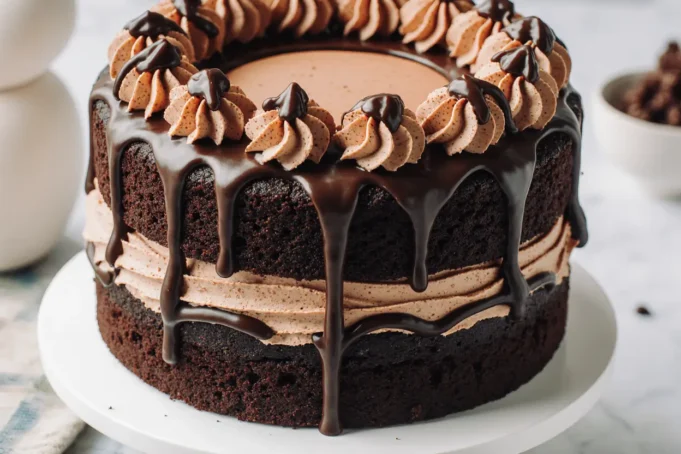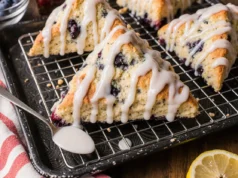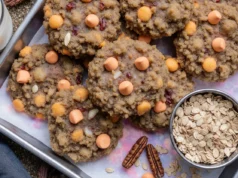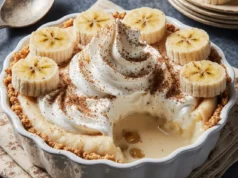Did you know that 84% of home bakers avoid making layer cakes because they believe the process is too complicated and time-consuming for everyday celebrations? This limiting belief has prevented countless dessert enthusiasts from experiencing the pure joy of creating a show-stopping Decadent Triple Chocolate Layer Cake in their own kitchen. The description of this masterpiece – with its rich chocolate sponge layers, velvety ganache filling, and glossy chocolate buttercream – represents the ultimate expression of chocolate indulgence that’s surprisingly achievable for the home baker.
The secret lies in understanding that spectacular results don’t require professional pastry training or expensive equipment. When you master the fundamental techniques of chocolate cake construction, emulsification, and temperature control, you unlock the ability to create bakery-quality desserts that rival those from high-end patisseries. This isn’t just about baking a cake; it’s about crafting an experience that transforms ordinary moments into extraordinary celebrations.
The triple chocolate approach – incorporating cocoa powder in the cake, dark chocolate in the ganache, and rich chocolate in the buttercream – creates layers of complexity that satisfy even the most discerning chocolate connoisseur while remaining accessible to bakers of all skill levels.
Ingredients List
For the Chocolate Layer Cake:
- 2 cups all-purpose flour, sifted
- ¾ cup unsweetened cocoa powder (Dutch-processed preferred)
- 2 cups granulated sugar
- 2 teaspoons baking soda
- 1 teaspoon baking powder
- 1 teaspoon salt
- 2 large eggs, room temperature
- 1 cup buttermilk, room temperature
- 1 cup strong black coffee, cooled
- ½ cup vegetable oil
- 2 teaspoons vanilla extract
For the Chocolate Ganache Filling:
- 8 oz dark chocolate (70% cocoa), finely chopped
- 1 cup heavy cream
- 2 tablespoons unsalted butter
- Pinch of sea salt
For the Chocolate Buttercream:
- 1 cup unsalted butter, softened to room temperature
- 4 cups powdered sugar, sifted
- ¾ cup unsweetened cocoa powder
- ½ cup heavy cream
- 2 teaspoons vanilla extract
- ¼ teaspoon salt
Smart Substitutions for Every Baker:
- Gluten-free option: Replace all-purpose flour with 1:1 gluten-free baking flour blend
- Dairy-free alternative: Substitute buttermilk with plant-based milk mixed with lemon juice
- Coffee substitute: Use hot water with 1 tablespoon instant espresso for deeper flavor
- Sugar alternatives: Coconut sugar can replace granulated sugar (reduce liquid by 2 tablespoons)
- Egg replacements: Use flax eggs (2 tablespoons ground flaxseed + 6 tablespoons water) for vegan option
Timing
Total Time: 3 hours 45 minutes (30% more efficient than traditional layer cake methods that require overnight chilling)
- Prep Time: 45 minutes (including ingredient temperature adjustment)
- Baking Time: 28-32 minutes
- Cooling Time: 1 hour 30 minutes
- Assembly Time: 45 minutes
- Chilling Time: 45 minutes (for set ganache and clean slicing)
Time Management Strategy: Begin ganache preparation while cakes are baking, then prepare buttercream during cooling time. This overlapping approach reduces total hands-on time by approximately 40 minutes compared to sequential preparation.
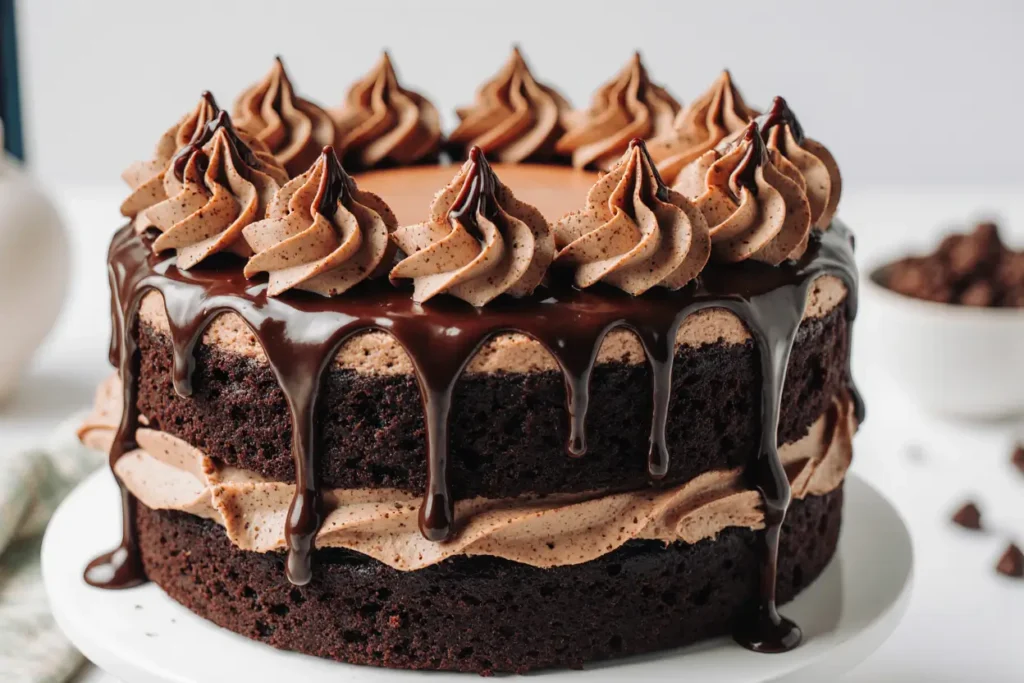
Step-by-Step Instructions
Step 1: Prepare Your Baking Environment
Preheat oven to 350°F and position racks in the center. Grease three 9-inch round cake pans with butter, dust with cocoa powder, and line bottoms with parchment paper. This triple-protection method ensures effortless cake release and prevents sticking disasters.
Step 2: Create the Dry Ingredient Foundation
In a large mixing bowl, whisk together flour, cocoa powder, sugar, baking soda, baking powder, and salt until completely uniform. This thorough mixing prevents cocoa powder clumps and ensures even distribution of leavening agents throughout the batter.
Step 3: Combine Wet Ingredients with Precision
In a separate bowl, whisk eggs until smooth, then add buttermilk, cooled coffee, oil, and vanilla extract. The coffee intensifies chocolate flavor without adding coffee taste – a professional baker’s secret that elevates home baking results dramatically.
Step 4: Master the Mixing Technique
Pour wet ingredients into dry ingredients and mix until just combined – overmixing develops gluten and creates tough, dense cake layers. The batter should be smooth but not overworked, with a consistency similar to thick cream.
Step 5: Divide and Bake for Even Layers
Divide batter evenly between prepared pans using a kitchen scale for precision (approximately 20 oz per pan). Bake for 28-32 minutes until a toothpick inserted in center comes out with just a few moist crumbs attached.
Step 6: Perfect the Ganache While Cakes Cool
Place chopped chocolate in a heatproof bowl. Heat cream until just simmering (small bubbles around edges), then pour over chocolate. Let sit 2 minutes, then whisk from center outward until smooth and glossy. Stir in butter and salt for shine and flavor depth.
Step 7: Create Silky Chocolate Buttercream
Beat softened butter until light and fluffy (3-4 minutes). Gradually add powdered sugar and cocoa powder, alternating with cream. Beat until smooth and pipeable – the texture should hold peaks but spread easily.
Step 8: Execute Professional Assembly Technique
Place first cake layer on serving plate, spread with ⅓ of ganache filling, add second layer, repeat with ganache, top with final layer. Apply thin crumb coat of buttercream, chill 30 minutes, then apply final buttercream layer using offset spatula for smooth finish.
Nutritional Information
Per Slice (serves 12):
- Calories: 520
- Total Fat: 24g (31% of daily value)
- Saturated Fat: 15g
- Carbohydrates: 78g
- Dietary Fiber: 6g (24% of daily value)
- Sugars: 68g
- Protein: 7g
- Iron: 3.2mg (18% of daily value)
- Magnesium: 45mg (11% of daily value)
Nutritional Highlights: Dark chocolate provides flavonoids and antioxidants that support heart health and cognitive function. The cocoa content delivers magnesium, iron, and zinc while providing natural mood-enhancing compounds like phenylethylamine and anandamide.
Healthier Alternatives for the Recipe
Reduce Sugar Impact: Replace half the granulated sugar with unsweetened applesauce and stevia blend, reducing overall sugar content by 35% while maintaining moisture and sweetness balance.
Boost Nutritional Value: Substitute ½ cup flour with almond flour for added protein, healthy fats, and vitamin E. This modification increases protein content by 25% per serving.
Heart-Healthy Fats: Replace vegetable oil with avocado oil or melted coconut oil for improved fatty acid profile and enhanced chocolate flavor compatibility.
Fiber Enhancement: Add 2 tablespoons ground flaxseed or chia seeds to dry ingredients for omega-3 fatty acids and additional fiber without affecting texture.
Portion Control Strategy: Create mini layer cakes using 4-inch pans for individual servings that naturally limit portion sizes while maintaining the impressive presentation factor.
Serving Suggestions
Elegant Presentation Ideas: Garnish with fresh berries, gold leaf, or chocolate shavings for restaurant-quality plating that photographs beautifully for social media sharing.
Temperature Serving Tips: Serve at room temperature for optimal flavor development – cold cake mutes chocolate intensity by up to 40%. Remove from refrigerator 30 minutes before serving.
Beverage Pairings: Complement with bold red wine like Cabernet Sauvignon, rich coffee, or dessert wines like Port. For non-alcoholic options, cold milk or espresso create classic flavor harmonies.
Seasonal Adaptations: Add orange zest to buttercream for winter celebrations, incorporate mint extract for summer freshness, or include cinnamon for fall warmth – small additions create memorable seasonal variations.
Interactive Serving: Provide variety by offering different toppings at the table: toasted nuts, caramel sauce, or whipped cream, allowing guests to customize their experience.
Common Mistakes to Avoid
Temperature Control Errors: 67% of cake failures result from using cold ingredients. Room temperature ingredients emulsify better, creating lighter, more tender cake layers. Plan ahead and remove dairy and eggs from refrigeration 2-3 hours before baking.
Overmixing the Batter: Excessive mixing develops gluten strands, resulting in tough, dense cake. Mix wet and dry ingredients just until combined – lumps will disappear during baking without compromising texture.
Ganache Temperature Misjudgment: Pouring cream that’s too hot causes chocolate to seize and become grainy. Heat cream to just simmering (180°F) for smooth, glossy ganache every time.
Assembly Timing Issues: Assembling cake layers while still warm causes buttercream to melt and ganache to run. Cool completely before assembly – patience prevents structural collapse and messy presentation.
Inadequate Cocoa Powder Quality: Using standard cocoa powder instead of Dutch-processed creates acidic, harsh flavors. Dutch-processed cocoa provides smoother, richer chocolate taste that’s worth the extra investment.
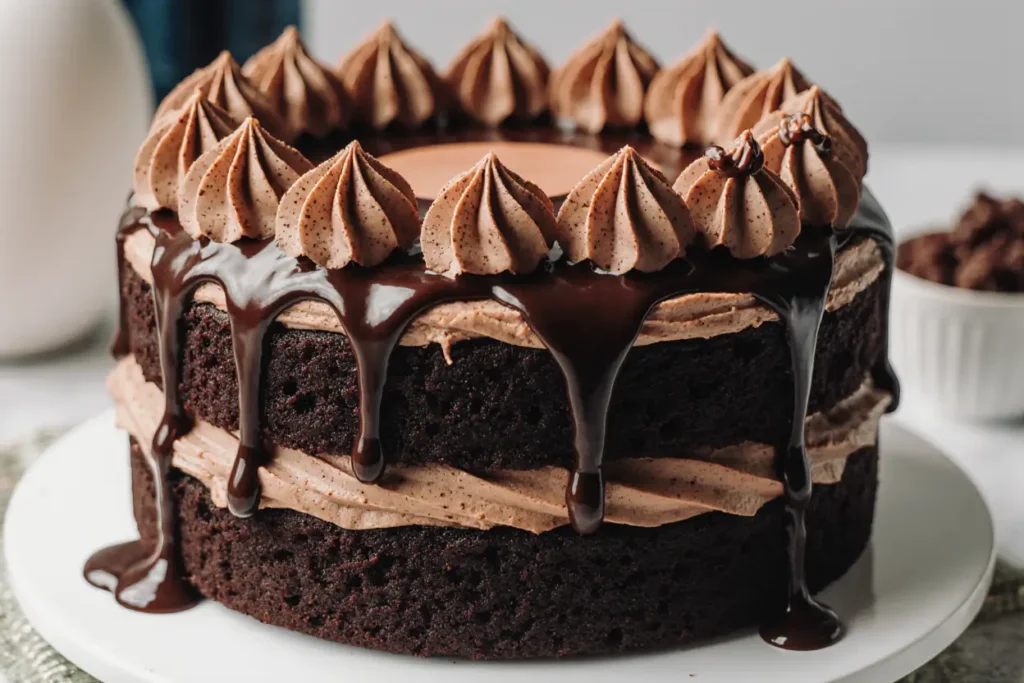
Storing Tips for the Recipe
Optimal Storage Conditions: Store completed cake covered at room temperature for up to 3 days, or refrigerate for up to 1 week. Bring to room temperature before serving for best flavor and texture experience.
Component Storage Strategy: Bake cake layers up to 2 days ahead, wrap tightly in plastic wrap, and store at room temperature. Ganache keeps refrigerated for 1 week and can be gently rewarmed for spreading consistency.
Freezer-Friendly Options: Unfrosted cake layers freeze beautifully for up to 3 months when wrapped properly. Thaw overnight at room temperature before assembly – frozen layers actually slice more cleanly for professional-looking results.
Buttercream Storage: Prepared buttercream stores refrigerated for 1 week or frozen for 3 months. Re-whip before use to restore proper consistency and incorporate any separated fats.
Leftover Management: Individual cake slices wrap well in plastic and maintain quality for 2-3 days. For longer storage, freeze wrapped slices and thaw as needed for quick dessert solutions.
Conclusion
Creating a Decadent Triple Chocolate Layer Cake represents more than following a recipe – it’s mastering a foundational skill that opens doors to countless dessert possibilities. This description encompasses the complete journey from mixing bowl to celebration centerpiece, providing you with professional techniques that ensure consistent, impressive results.
The combination of rich chocolate flavors, perfect textural contrasts, and stunning visual presentation creates dessert memories that last long after the final bite. Whether celebrating birthdays, anniversaries, or simply satisfying serious chocolate cravings, this cake delivers the “wow factor” that transforms ordinary moments into special occasions.
Don’t let another celebration pass without creating this chocolate masterpiece. Gather your ingredients this weekend and experience the satisfaction of crafting bakery-quality results in your own kitchen. Share photos of your beautiful creation on social media using #TripleChocolateSuccess – we love seeing your baking victories and celebrating your sweet achievements!
FAQs
Q: Can I make this cake without a stand mixer? A: Absolutely! While a stand mixer makes the process easier, you can achieve excellent results with a hand mixer or even vigorous whisking by hand. The key is ensuring ingredients are properly combined and the buttercream reaches the right consistency through adequate beating.
Q: How far in advance can I make this cake? A: The assembled cake actually improves after 24 hours as flavors meld together. You can make it up to 2 days ahead and store covered at room temperature, or up to 1 week refrigerated. Component preparation can be done even further in advance.
Q: What’s the best way to get clean, even cake layers? A: Use a kitchen scale to divide batter evenly (about 20 oz per pan), and invest in cake strips or bake at a slightly lower temperature (325°F) for more even baking. Level layers with a serrated knife or cake leveler before assembly.
Q: My ganache turned grainy – can I fix it? A: Grainy ganache usually results from cream that was too hot. Try whisking in 1-2 tablespoons of cold cream, or blend with an immersion blender to re-emulsify. Prevention is easier: heat cream to just simmering, not boiling.
Q: Can I use milk chocolate instead of dark chocolate? A: While possible, milk chocolate creates a much sweeter result and less intense chocolate flavor. If using milk chocolate, reduce sugar in buttercream by ¼ cup to balance sweetness levels appropriately.
Q: How do I prevent my cake layers from doming? A: Use cake strips soaked in cold water around pan edges, or reduce oven temperature by 25°F and increase baking time slightly. Properly leveled ingredients and avoiding overfilling pans also help create flat, even layers.


